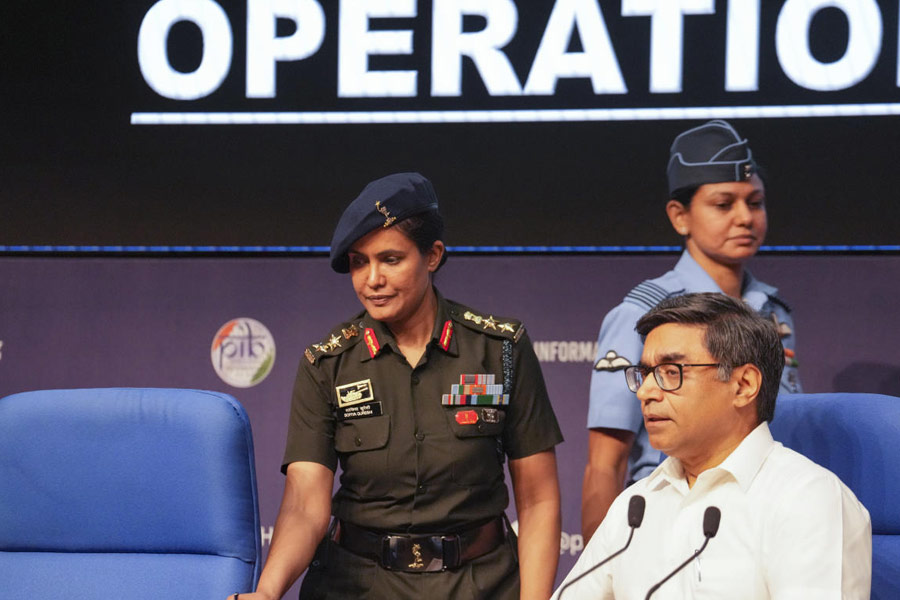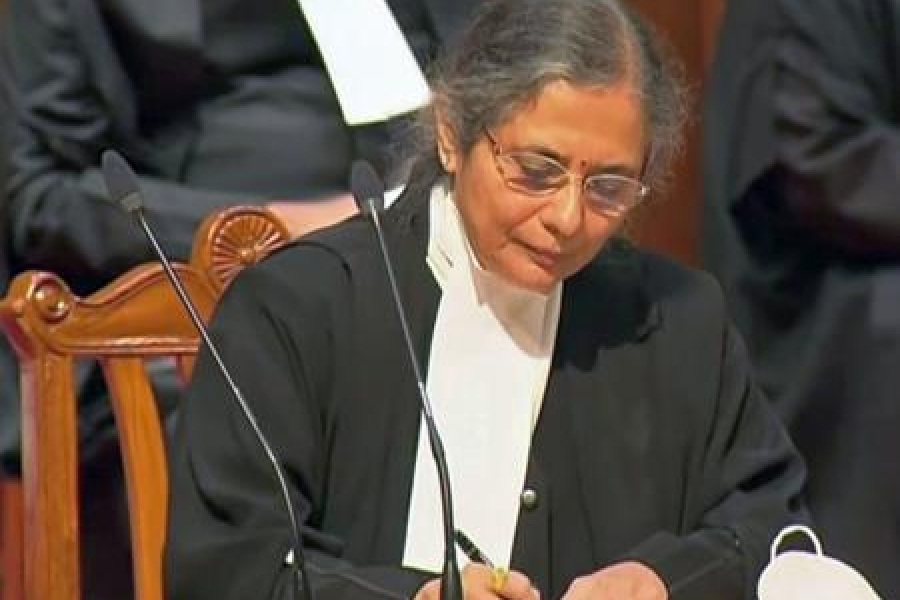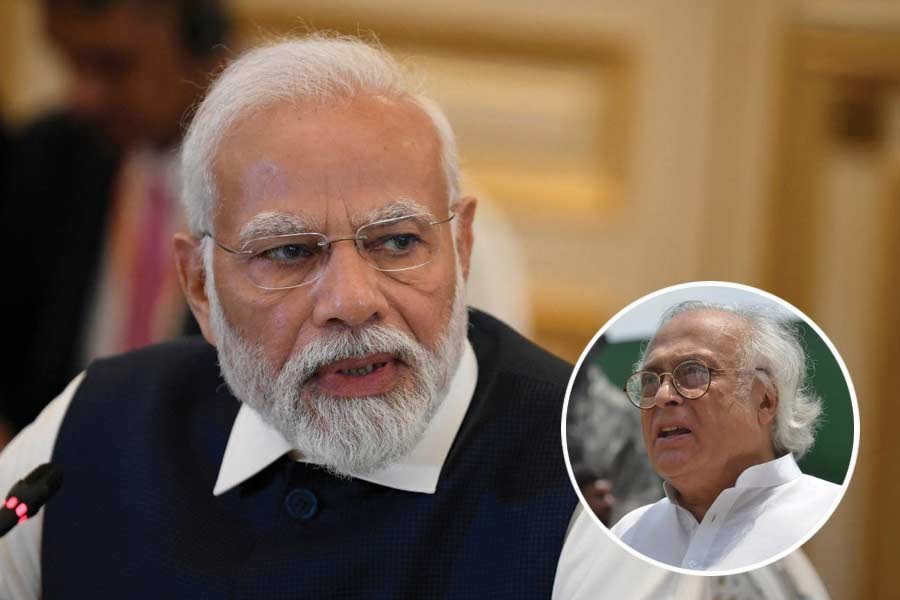 |
| Models: (Left) Rachael Jones and Romieta Bose. Books courtesy Tarun Kumar Shaw. Picture by Rashbehari Das |
As 29-year-old Piyali Sanyal sat reading the lines, she began to grin. She could feel the romance coming. “Just as I passed, he went rigid in his seat. He stared at me again, meeting my eyes with the strangest expression on his face — it was hostile, furious. I looked away quickly, shocked, going red again.”
Then Piyali forwarded the link of the book, one of the Twilight series, to her friends with a note attached — “check this out, good read”.
“I was so hooked to the book that I would read even if I had a five-ten minute break at work. I just couldn’t stay away. I was extremely surprised because I’m not really into mushy romances, but here I was, reacting like a giggly teenager to Edward,” she recalls.
When Edward’s and Bella’s eyes lock, the world and its aunt are riveted to the love story between a human and a vampire, with the werewolf Jacob providing an interesting third angle. Marketed as a story for teenagers, the series is often as big a hit with the moms and elder sisters.
The series writer Stephanie Meyer had confessed in an interview: “I didn’t write these books specifically for the young-adult audience. I wrote them for me. I don’t know why they span the ages so well, but I find it comforting that a lot of 30-somethings with kids, like myself, respond to them as well — so I know that it’s not just that I’m a 15-year-old on the inside!”
It’s true of other books as well. No longer are books clearly demarcated in shelves marked as children’s fiction, books for the young adults and adults. Divisions like Enid Blyton for the kids, Nancy Drew and Hardy Boys for the teens and then the wide world of adult literature is passe. In fact, if mamma and papa are picking up the kid’s copy of Harry Potter or the Twilight saga to read, the kids are making themselves comfortable with The Girl With the Dragon Tattoo, Dan Brown, Chetan Bhagat and his ilk. One book serves the entire family.
“I wouldn’t say that is a new trend. Alice in Wonderland or Charles Dickens has always been popular with people of all age groups. It was only down the years, as retail developed that publishers and retailers started demarcating the books age-wise,” says Karthika V.K., publisher and chief editor of HarperCollins, India. But while Lewis Carroll and Charles Dickens are classics that can be read and interpreted at different levels, the same doesn’t hold with Harry Potter and Twilight.
Popular fiction, especially in English, is becoming more and more like the movies. A formula plot, twists and turns, lots of excitement, and followed up by an actual movie, as with Harry Potter and Twilight. Which is seen/read by everyone.
Advertising professional Arindam Bhattacharyya picked up the Twilight series after watching the first Twilight movie. “I read the graphic novel. I think that is one reason why people across age groups are reading the same stories, because it is available in different media — books, graphic novels, films, video games,” he says.
Same plot thickens
Penguin launched an adult’s edition of Harry Potter after the first few books were found to be as much of a hit with grown-ups. “The cover was different,” says a Penguin employee.
Twilight has spawned similar series. In the first House of Night book Marked, Zoey Montgomery — later Zoey Redbird — is marked by a tracker to be a vampire and has to leave school and family to join the House of Night, a school that trains one to be an adult vampire. As in Twilight, being a vampire is not a bad thing. The vampires are said to be the most beautiful and talented people of the society, who are given a bad name by the “people of faith”. The rituals and practices of the vampires make them more the followers of a cult and not just a blood-sucking species. Other vampire stories, such as the series Vampire Academy, follow a similar plot. “The stories of House of Night and Vampire Academy follow an almost similar plot of paranormal romance,” agrees S.N. Mishra, chief operating officer, Apeejay Oxford Bookstore.
The other genres that everyone is reading are chick lit and the campus novel, one an indigenous off-shoot of the foreign genre, the other of indigenous origin. They are not only being read by everyone, but they also tend to tell the same story, a coming-of-age story, of a woman, of a professional, of even a school student. And several times featuring three characters in the lead (Five Point Someone, which started it all, Potato Chips, The 3 Mistakes of My Life...).
But says Gautam Jatia of Starmark: “Differentiation is necessary to appeal to a niche audience. It is done by the publishers to increase the market.”
Anuja Chauhan has written The Zoya Factor in the chick-lit tradition. It’s a slice of urban India seen through the eyes of her ad-professional protagonist Zoya. “I get letters from schoolgirls and even 50-year-olds. I’m touched, but I hadn’t really expected the book to be popular across such wide age groups,” admits Chauhan.
The author, an ad-professional herself, agrees that everyone seems to be reading the same books.
“I’m not much into Indian fiction, but my daughter and I read the same books like The Princes Diaries. Both of us read Twilight, but didn’t like it. It has to be a compelling story. There can’t be a formula,” she insists.
Harper Collins recently published Potato Chips, which is set in a school and written by St Xavier’s School Calcutta student Anshuman Mohan. It’s a campus novel set in school.
10 steps to fiction
There is a formula. “Like the movies, the plots are the same, only the twists and turns are different,” says an employee of Penguin. And like the movies, they are reaching out to people across age groups. “I would say those in the 15-to-35 age group are reading the same books,” says Sidharth Pansari of Crossword. “While the market for popular English fiction has grown, the number of good books is few,” he adds, again equating the situation with films.
“Books written for teens and young readers contribute at least 30 per cent of the market,” confirms Mishra of Oxford. He adds that the readers of these books can be from different age groups (those between 15 and 30). Oxford estimates the annual growth of the fiction market at 20 to 30 per cent.
The language is important. Chaitali Chakraborty, 30, feels that since her generation doesn’t have a Ghanada to turn to, having grow up on English fiction, perhaps it doesn’t mind picking up books written in English for the young to relive their childhood. The Harry Potter fan also attributes the reading pattern to the greater availability of books.
“We would get books only at lending libraries when we were young and then we would have to go to the sections marked for us. Today kids have the option of buying off the racks, or ordering and reading books on the Net. Age-specific demarcation doesn’t hold any more,” she says.
So as Edward plays baseball with his vampire family, Zoey Redbird’s pals at the House of Night watch MTV’s Real World and Zoya Solanki kisses Indian cricket captain Nikhil Khoda in her garden, it works for everybody.
 |
 |
 |
The publishers with the most
Rupa, which published Chetan Bhagat, has followed him up with others. “We were targeting young readers in colleges and universities with Bhagat. But it became popular with even younger kids and older people. We sold one lakh copies of his latest book — Two States, the Story of My Marriage — within six months in Calcutta alone. Now-a-days in the popular fiction category if a book sells 50,000 copies in six months it’ll qualify as a best-seller,” says Raju Barman of Rupa.
After Bhagat, Rupa has published more such books like Right Fit Wrong Shoe by Varsha Dixit, which is the story of Nandini, a girl from Kanpur, looking for — what else? — love, Neeraj Chhibba’s Zero Percentile, where the protagonist Pankaj, who always thought of going to IIT, ends up in hostel in Russia, and Nothing Can Be As Crazy by Ajay Mohan Jain, which revolves around the life of Suresh, an IIT alumnus working in a bank. Then there is If God was a Banker by Ravi Subramanian and Trust Me, a romance between Paro, a small town girl-turned-ad professional, and Rahul, an aspiring Bollywood star. “The writing and language of these books is very similar,” agrees Barman.
Srishti is one of the biggest publishers of the current crop of Indian popular fiction. Jab Se You Have Loved Me is one of their latest titles. The story revolves around Atin, a first-class IIT graduate who earns his living selling cheap Chinese gadgets, and his love Ujani, a first class bio-science graduate from Calcutta University who works as an air hostess. Then there’s The Quest for Nothing, It’s All About Love and others.
One of Srishti’s famous finds has been Durjoy Datta who has written books like Of Course I Love You… Till I Find Someone Better and Now That You Are Rich… Let’s Fall In Love (co-authored with Maanvi Ahuja). “Many NRIs are also writing novels now and will be published soon,” said Jayanta Kumar Bose of Srishti.










